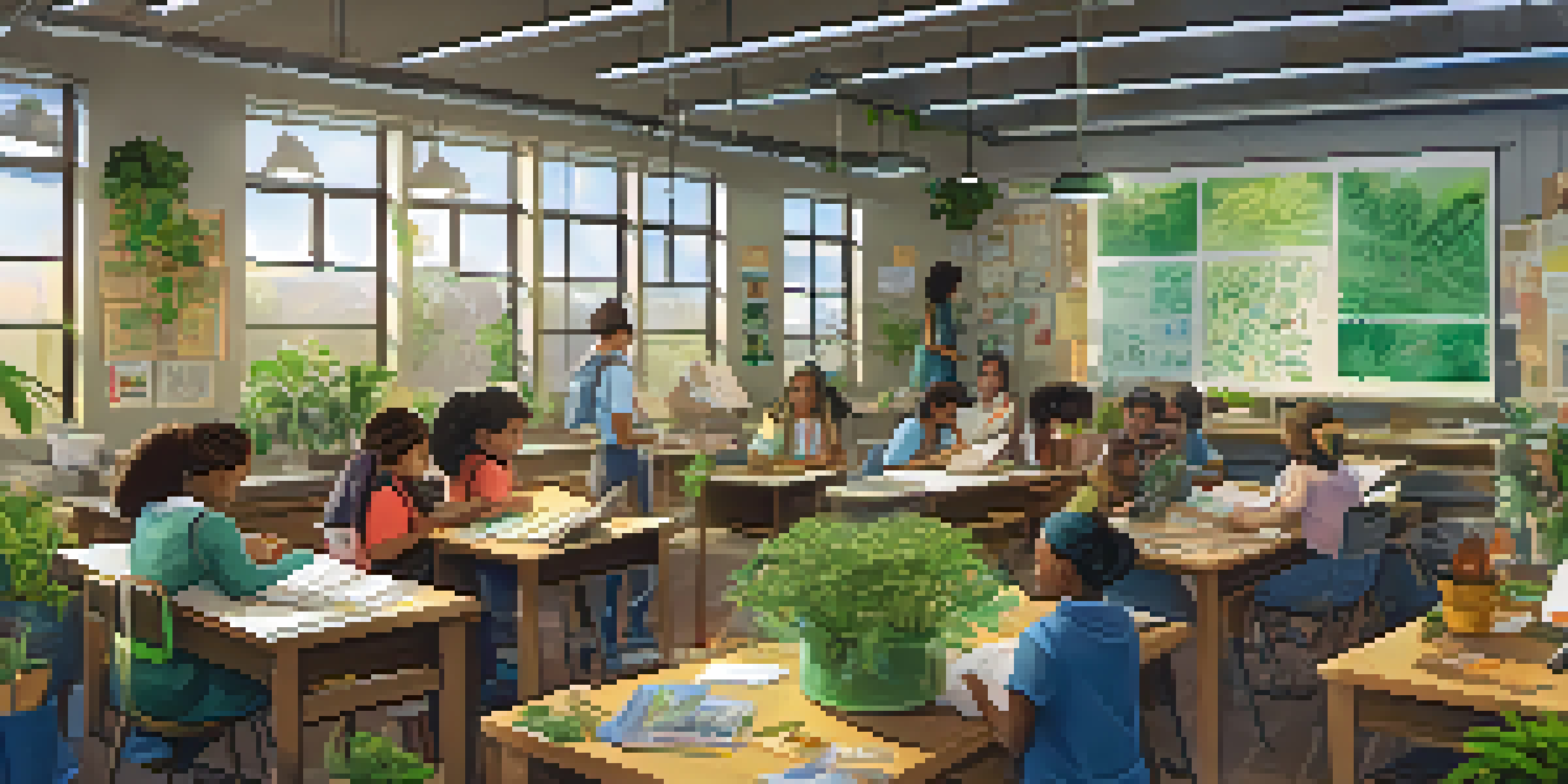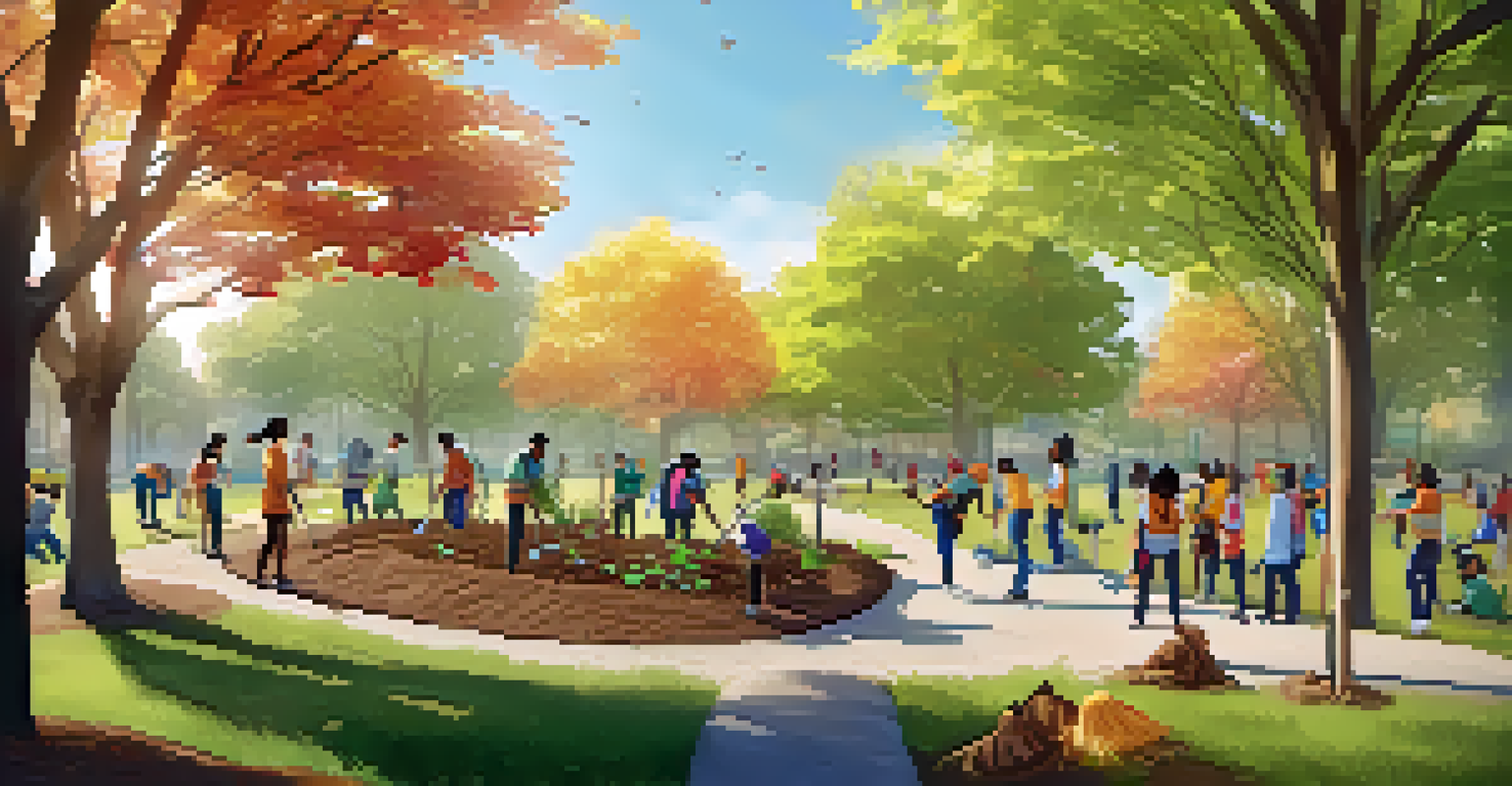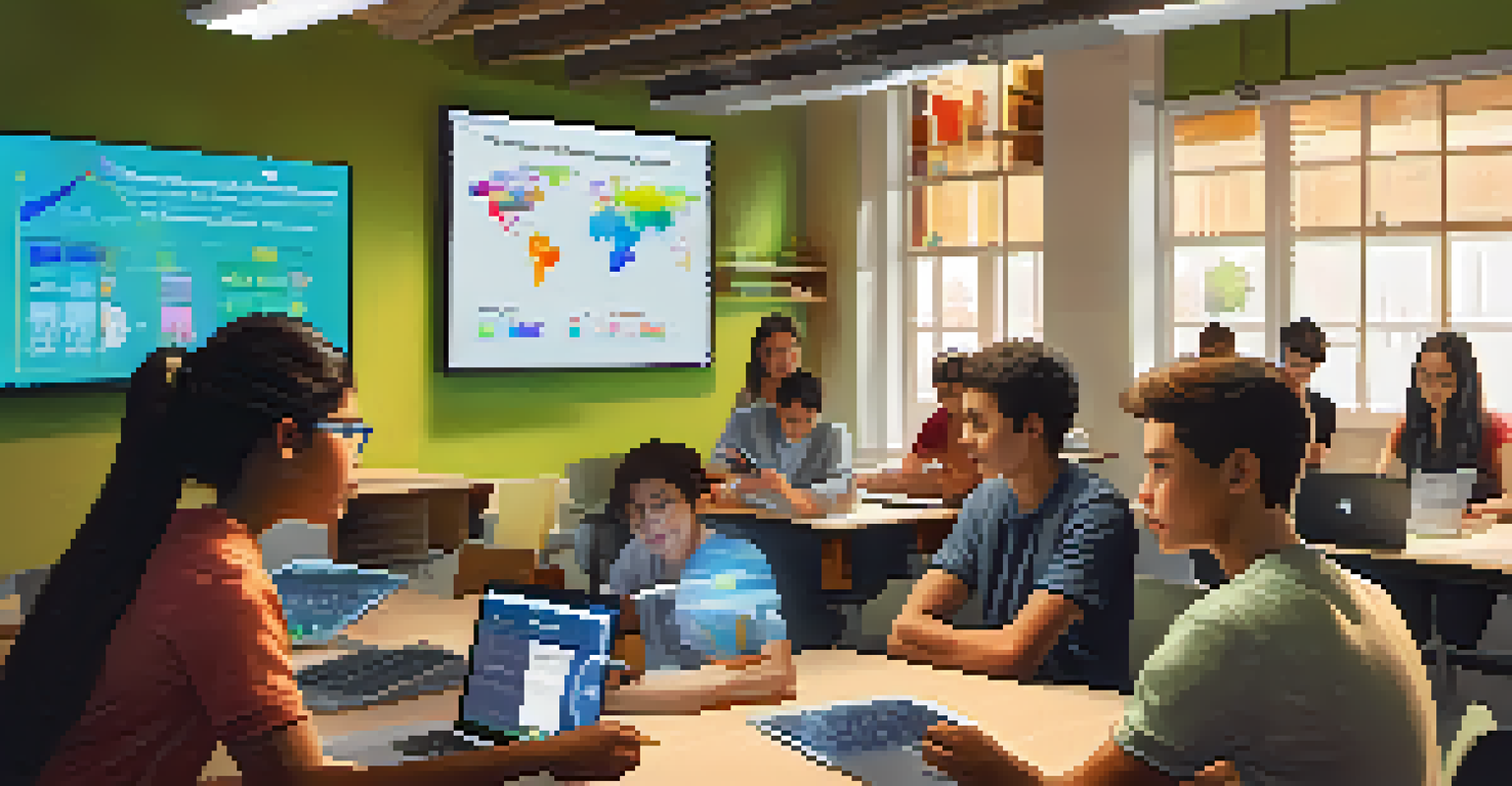Sustainability-Focused Project-Based Learning Strategies

Understanding Project-Based Learning for Sustainability
Project-based learning (PBL) is an educational approach that empowers students to learn through engaging projects. This method encourages active exploration and helps students grasp complex concepts by applying them to real-world contexts. When focused on sustainability, PBL not only enhances academic skills but also fosters a sense of responsibility towards the environment.
Education is the most powerful weapon which you can use to change the world.
By integrating sustainability into PBL, educators can inspire students to think critically about environmental issues. For instance, a project could involve researching local pollution sources and proposing actionable solutions. This hands-on approach allows students to connect their learning with the community, making education both relevant and impactful.
Moreover, sustainability-focused PBL encourages collaboration among students. Working in teams to tackle environmental challenges promotes communication and problem-solving skills, which are essential in today’s interconnected world. Ultimately, this approach nurtures a generation of environmentally conscious individuals ready to make a difference.
Incorporating Real-World Problems into Learning
One effective strategy in sustainability-focused PBL is to incorporate real-world environmental problems into the curriculum. For example, students can investigate issues like climate change, waste management, or biodiversity loss. This connection to reality not only makes learning more engaging but also emphasizes the urgency of these challenges.

When students work on projects that address actual problems, they become more invested in their learning. They may conduct surveys, gather data, or even collaborate with local organizations to find solutions. This experiential learning process fosters a deeper understanding of the complexities surrounding sustainability.
PBL Enhances Sustainability Learning
Project-based learning empowers students to engage with real-world sustainability issues, fostering both academic skills and environmental responsibility.
Additionally, tackling real-world problems helps students develop critical thinking and analytical skills. They learn to evaluate information, consider multiple perspectives, and propose innovative solutions. Such skills are invaluable, both in their academic journeys and future careers.
Fostering Interdisciplinary Learning Through Projects
Sustainability challenges often intersect multiple disciplines, making them perfect for interdisciplinary learning. For instance, a project on renewable energy can touch on science, technology, engineering, and even economics. By blending subjects, students gain a holistic understanding of sustainability.
The greatest threat to our planet is the belief that someone else will save it.
This approach encourages students to draw connections between different areas of knowledge. For example, they might explore the scientific principles behind solar energy while also considering its economic viability and social implications. Such connections reinforce the idea that sustainability is a multifaceted issue.
Moreover, interdisciplinary projects can spark creativity and innovation. When students collaborate across subjects, they are more likely to think outside the box and develop unique solutions. This cross-pollination of ideas can lead to exciting discoveries that traditional methods might overlook.
Leveraging Technology for Enhanced Learning Experiences
In today’s digital age, technology plays a crucial role in enhancing project-based learning. Utilizing tools like online research databases, simulation software, and social media can enrich students' educational experiences. For instance, students can use data analytics to assess environmental impact, making their projects data-driven.
Technology also facilitates collaboration beyond the classroom. Students can connect with experts, activists, or peers from different locations, broadening their perspectives. This global interaction helps them understand that sustainability is a worldwide concern that requires diverse solutions.
Real Problems Drive Student Engagement
Incorporating real-world environmental challenges into the curriculum makes learning more relevant and encourages deeper student investment.
Furthermore, integrating technology into sustainability projects can spark student interest and engagement. Interactive platforms and multimedia presentations can make projects more dynamic and visually appealing, ensuring that students are excited about their learning journey.
Encouraging Community Involvement and Partnerships
Community involvement is key to successful sustainability-focused PBL. Engaging local organizations, businesses, and residents can provide students with valuable insights and resources. For example, partnering with a local recycling center can offer practical experience and a better understanding of waste management.
Collaboration with the community not only enriches the learning experience but also strengthens community ties. Students can present their findings or solutions to local stakeholders, fostering a sense of pride and ownership. This active participation can lead to real change in their neighborhoods.
Additionally, community partnerships can provide students with networking opportunities and potential career paths. By connecting with professionals in the field, students can gain mentorship and guidance, which can be invaluable as they explore future academic and career options.
Assessment Strategies for Project-Based Learning
Assessing student performance in project-based learning can be challenging, especially in sustainability projects. Traditional testing methods may not effectively measure the skills and knowledge gained through hands-on experiences. Therefore, educators should consider alternative assessment strategies.
One effective approach is to use rubrics that evaluate various aspects of the project, including creativity, collaboration, and problem-solving. This comprehensive assessment method acknowledges the multifaceted nature of learning and encourages students to excel in different areas.
Community Partnerships Enrich Learning
Engaging local organizations and businesses in sustainability projects provides valuable insights and fosters a sense of community ownership among students.
Additionally, self-assessment and peer evaluation can empower students to reflect on their learning experiences. By encouraging them to assess their contributions and the effectiveness of their projects, students become more aware of their strengths and areas for improvement, fostering a growth mindset.
Creating a Culture of Sustainability in Education
To maximize the impact of sustainability-focused PBL, it's essential to create a culture of sustainability within the educational environment. This involves integrating sustainable practices into everyday school life, such as recycling programs, energy conservation, and green initiatives. When students see these values reflected in their school, they are more likely to embrace them.
Furthermore, educators should model sustainable behaviors and engage in continuous learning about environmental issues. By demonstrating a commitment to sustainability, teachers can inspire their students to adopt similar values, fostering a sense of shared responsibility.

Creating this culture not only enhances the learning experience but also prepares students to be responsible citizens. They will carry these values beyond the classroom, contributing to a more sustainable future in their communities and beyond.